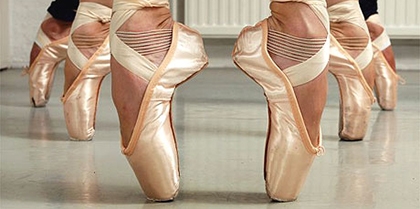 | Billing Questions: (833) 258-4717
| Billing Questions: (833) 258-4717
Online Bill Pay & Patient Portal | Request Medical Records / FMLA & Disability Forms
Our Blog
It's Nutcracker Season! How to Prevent the Most Common Foot and Ankle Injuries in Ballet Dancers

The Nutcracker ballet is a holiday tradition that seems as old as the Christmas tree & mistletoe. You’d be hard pressed to find a ballet company that isn’t performing The Nutcracker in the month of December. For ballet dancers, the long rehearsals that must be endured to ensure successful performances will increase their chances of sustaining foot and ankle injuries. Let’s look at how to prevent common foot and ankle injuries during the Nutcracker Season.
The right shoes: An improperly fitting shoe can result in nail avulsion, ingrown toe nails, infection, and injury to soft and hard tissues of the foot. Your shoes must be perfectly fitting in terms of length, width of toe box, vamp type, and shank stiffness.
The right technique: Following the right training protocol under the guidance of a reputable instructor is very important for dancers of all ages to develop their ballet skills while minimizing the risk of suffering foot and ankle injury.
The right surface: When practicing, avoid dancing on hard or uneven floors to prevent risk of hurting your feet and ankles when landing from a jump or performing complicated ballet maneuvers.
The right nourishment: Ensure that you are eating the right type and quantity of food as well as adequate amounts of fluids to maintain your energy levels. You are more likely to misstep and hurt yourself during a performance if your body is not adequately nourished.
The right conditioning: You can strengthen the muscles in your feet and ankles by performing specialized exercises such as towel scrunching, doming, and resistance band point/flex exercises. Strong muscles in the feet and ankle support the joints and ligaments of your feet and provide protection against injury.
The right amount of rest: Adequate rest is essential to give your body a chance to heal from the daily wear and tear. If you are concentrating on pointe work on one day, you should focus on other movements on the next day. This way you are giving one muscle group an opportunity to recover while working out another muscle group.
It must be noted that dancing through the pain is not recommended. If you are experiencing foot or ankle pain that does not seem to be getting better even after a few days of rest, consulting a foot and ankle specialist about treatment may be your best course of action for a quick return to your active lifestyle.
The Foot and Ankle physicians at Carrell Clinic in Frisco and Dallas, Texas are trained in treating the most severe and complex foot and ankle conditions. Our specialists will evaluate your foot condition and offer a personalized treatment solution in keeping with your activity level.
